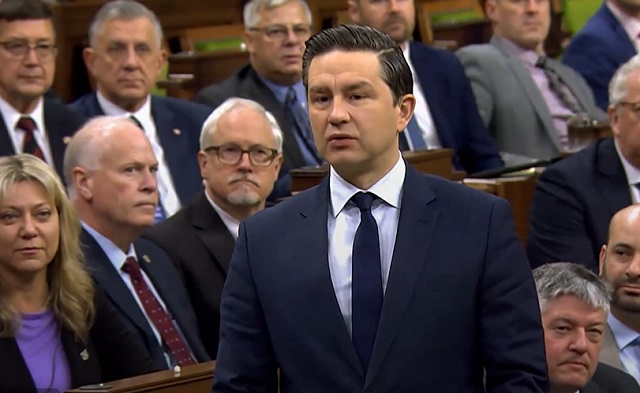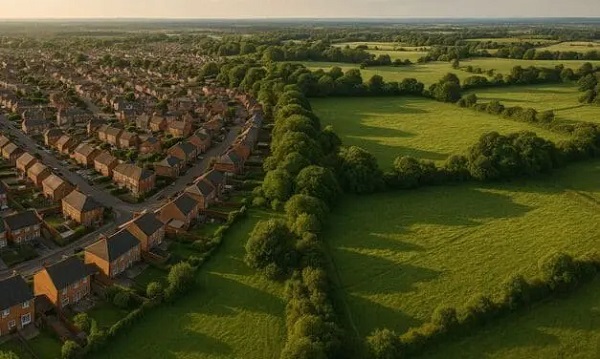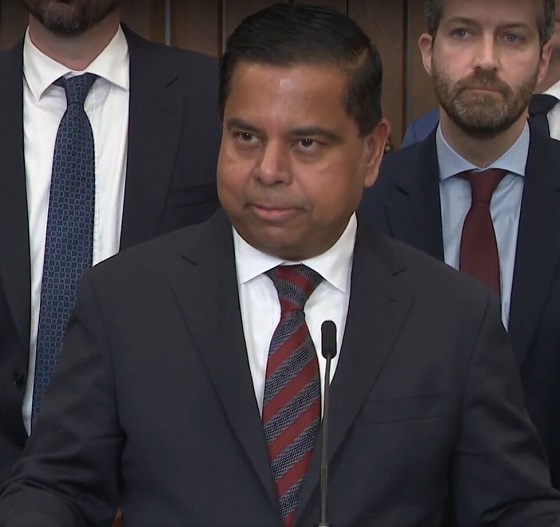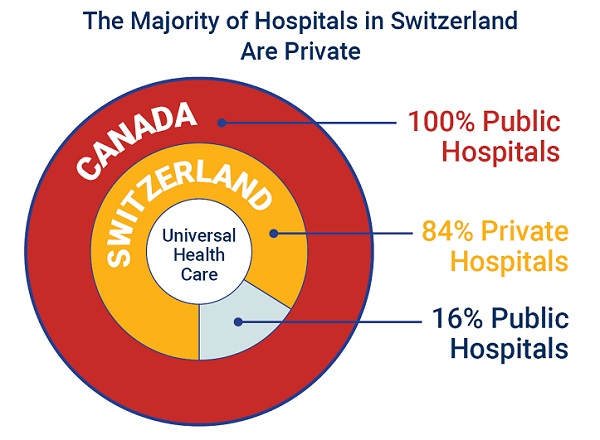Housing
Conservative leader Pierre Poilievre’s video on Canada’s housing crisis under Trudeau gov’t goes viral

From LifeSiteNews
‘Housing hell: How we got here and how we get out’ has been viewed more than four million times.
A video by Conservative Party of Canada (CPC) leader Pierre Poilievre exposing the country’s housing prices and supply crisis, which a taxpayer watchdog said is being fueled by high-interest rates from bad fiscal policy by Prime Minister Justin Trudeau’s government, has reached over 4 million views.
“Something new and strange has happened in Canada. Canada is sitting on probably one of the largest housing bubbles of all times, something we haven’t seen before,” Poilievre said in his 15-minute video titled Housing hell: How we got here and how we get out.
“An entire generation of youth now say they will never be able to afford a home. This is not normal for Canada.”
Housing hell: How we got here and how we get out. pic.twitter.com/vVLsXMVM35
— Pierre Poilievre (@PierrePoilievre) December 2, 2023
The video goes deep into Canada’s housing market and includes statistics on why it is in such a dire state. It currently has 4.2 million views on X (formerly Twitter) after it was released on December 2.
Poilievre documents in his video, using facts to back him up, that in the coming months and years “tens of thousands of Canadians could default on their mortgages” due to skyrocketing interest rates.
He noted how the “nightmare scenario” after “generations of affordable and stable Canadian home prices” means that 66% of a person’s average monthly income is to simply “make payments on the average single detached Canadian house.”
“Given that most of the remaining 34 percent of the family paycheck is taken out by taxes, there’s literally nothing left for food and recreation,” Poilievre noted.
Taxpayer watchdog says high house prices due to Trudeau’s out of ‘control’ government
Franco Terrazzano, federal director for the Canadian Taxpayers Federation (CTF), told LifeSiteNews that the reason house prices, along with everything else, are more expensive is due to Trudeau’s “out of control” governmental spending.
“Trudeau’s never-ending deficits and the hundreds of billions of dollars the Bank of Canada printed during the pandemic are driving up the cost of everything,” Terrazzano told LifeSiteNews.
“Life is more expensive because the cost of government is out of control.”
Terrazzano noted that governmental fiscal policy is making home prices more expensive and thus out of reach for most. He said what needs to happen is a reduction in red tape.
“Taxes and onerous government regulations are making homes more expensive,” Terrazzano told LifeSiteNews.
“If governments want to make homes more affordable, they would cut taxes and the red tape that makes it harder and more expensive to build homes.”
Terrazzano highlighted a report from the C.D. Howe Institute that shows the cost of excessive government regulations on home building.
As for Poilievre, he observed how it now would take a staggering 25 years just to save enough money to make a downpayment for a simple home in Toronto.
He continued, noting how newlyweds now on average pay $1,000 per month to rent a “single room in a townhouse that they share with two other couples.”
He also raised the issue of how 35-year-olds “live in their parent’s basements” and “rents are so high in Toronto that students live in homeless shelters.”
When it comes to middle-class workers, Poilievre emphasized how “people like nurses and carpenters now live in their vehicles.”
While housing falls primarily under provincial and municipal jurisdiction, some areas, such as interest rates, are directly influenced by the federal government.
House prices have shot up in Canada due to short supply in the market, and speculative buying and interest rates have risen to highs not seen for decades. As it stands, Canada’s interest rate sits at 5%. At this same time in 2021, interest rates were 0.25%.
This past Wednesday, the Bank of Canada decided to keep rates at 5% but did not rule out future rate increases, as it “is still concerned about risks to the outlook for inflation and remains prepared to raise the policy rate further if needed.”
Interestingly, Trudeau put out a video the same day as Poilievre that he said was to address housing challenges. This video only has 264,000 views, however.
Curiously, Poilievre made no mention of Canada’s high immigration levels, which critics say has put a strain on an already tight supply.
Maxime Bernier, leader of the People’s Party of Canada, has been one of the only party leaders to call out high immigration levels and their effects on housing.
Trudeau’s ‘money printing’ pouring fuel on ‘inflationary fire’
According to Poilievre in his video, in the past one could save enough to buy a house by their mid-20s but said this “changed” about “eight years ago” when Trudeau came to power.
“When the government borrows and spends, it builds up the goods we buy and the interest we pay. The Trudeau government has doubled Canada’s debt, adding more debt than all prime ministers combined. Our finance minister has conceded that this deficit spending pours fuel on the inflationary fire,” Poilievre said.
He observed how excessive money printing through a banking scheme called “quantitative easing” has only benefited well-connected banking insiders and financial institutions that are awash with money.
“In recent years, the Trudeau government spending has exploded, and they’ve been borrowing more than lenders will lend. So, the Bank of Canada has started creating the cash. The money supply has therefore grown eight times faster than the economy over the last three years,” Poilievre said.
“More money bidding on fewer goods, including fewer houses, equals higher prices.”
Poilievre ended his video by stating that the “good news is housing costs were not like this before Justin Trudeau.”
“And they won’t be like this after he’s gone,” he added.
He said that the solution, besides a change in leadership, is for all levels of government to work together to cut red tape and taxes to encourage the construction of new homes.
Under Trudeau, mainly due to excessive COVID money printing, inflation has skyrocketed.
A recent report from September 5 by Statistics Canada shows food prices are rising faster than headline inflation at a rate of between 10% and 18% per year.
Earlier this year, the Bank of Canada acknowledged that Trudeau’s federal “climate change” programs, which have been deemed “extreme” by some provincial leaders, are indeed helping to fuel inflation.
Alberta
Why The Liberal’s Real Estate Economy Could Push Alberta Out of Canada

The real estate maxim goes something like, “Don’t buy the best house on a bad street.” For Albertans smarting from the recent election, that sentiment is starting to gain momentum. Seeing themselves as the credit card for Carney Canada, 47 percent of Albertans recently polled by Leger say they’d consider ending the ties that bind to Eastern Canada.
There are many emotional arguments for the surge from 27 percent pre-election to the current number— starting with unending equalization payments to ungrateful relatives in Quebec and Ontario. Most pertinent to those dismayed by the East’s infatuation with Mike Myers and hockey sweaters is the unsustainable Trudeau Easy Money economy, the real estate bubble that replaced conventional economy since 2015. (Trudeau’s decade left Canada with the lowest GDP in the western world and a $1.26T debt.)
There are now clear signs that the real-estate economy— in the form of condos— created by Trudeau’s post-modern philosophy is about to dive and take with it a good deal of wealth from Canadians and the financial industry. (RBC, the largest lender in Canada just reported $8.94 billion in loans that are unlikely to be paid back, up 13.5% from the first quarter.) And distancing themselves from an unrealized gains tax on principal residences might be a smart move for Alberta and whoever else wants to save their skin.

For the decade before Donald Trump called his bluff, Woke Canada bought Trudeau’s notion you could have wealth without work. The Trudeau notion of an economy was to de-industrialize Canada, resort to “clean” renewable power and live off the equity in Boomers’ homes. Oh, and use billions in tax dollars to push home prices higher for the past 10 years while importing four million new entitled folks.
As Trudeau’s advisor, Mark Carney subscribed to the idea that playing the real-estate game to fund a modern state, the way Albania once based its economy on a lottery. Municipal governments liked the idea of condo financing, because it returned maximum taxation from a small footprint—unlike the cumbersome factories and plants that left for the suburbs.
So they’ve doubled down on real estate while letting traditional industry go to the third world. @MikePMoffatt shows that government taxes and fees add up to $253K on a brand new $1.350M condo in Vancouver, or roughly 19 percent of the price. That $12,000 explains how taxes— and taxes-on-taxes— add over $250K to a Vancouver condo.
This tax hauls why municipalities are pitching hard on multiple-dwelling zoning as a cure-all. No wonder developers in Vancouver are still paying almost double the assessed value for land to build high density housing. In their haste to go big Vancouver realtors are now turning down borderline clients.
But this formula is falling apart. In Toronto, the average monthly rent is now about $2,250. For a condo costing $600K that means’ the investment is $1,800 under water. Little surprise that 20 percent of the city’s condo developments refuse to close. (What has happened to the missing 20 percent? Was it paid off or was it extended in some way?

The economy has seen this bubble coming and yet no one wants to end the party. And that is with tens of thousands of units still to come on stream. You hear stories in the condo/ construction industry in southern Ontario, the Lower Mainland of B.C. and Montreal where a typical builder sold 10 homes in past 12 months compared to the usual 40. Sellers are building exteriors but leaving inside unfinished just to keep crews working.
Some trades say they haven’t worked in a year as the glut suspends work. This is the cost for basing an economy on real-estate speculation. It’s why the Liberals played so hard for the Boomer vote in the election. Calm the aging by protecting the equity built up on their modest homes sitting on valuable property. Which punishes the younger voters who skewed CPC in the election.
While the population booms in Canada and condos sit empty, there remains a dire need for affordable housing in all the main urban markets— including Calgary and Edmonton. But real estate in Canada can’t function based on interest rates over three percent. There is huge political pressure from tax-hungry governments on the Bank of Canada to cut rates. This leads to expectations of 2.79% mortgage rates by the end of 2025.
Mortgage analyst Ron Butler @ronmortgageguy: “From the Feb 2022 peak the regions in Ontario that had the highest run up in 2021 have dropped 17% to 22%. And they will drop some more. We all have begun understand just how big a Catastrophe the 416 Dog Crate Condos have turned into”. (Those who remember the crash of 1980s-1990s have that t-shirt.)

Now replicate the same results across urban Canada. Thousands of owners walking away from underwater mortgages and poorly built homes. While the Big 6 banks can probably sustain writing off that much paper, the smaller funding industry is going to get hammered. Says Butler” “You can’t run 30-year lows in real estate transactions with a 50 percent higher population forever without pressure building from factors like Marriage Breakdown, Old Age & Employment change. But price recovery? More pain coming.
For those who bought the Liberals’ “Change!” Platform as a new economic plan based on frugality and efficiency, guess again. With Parliament prorogued the Carneyites have been ladling out billions of dollars both pre-and post-election to keep the economy from stagnating. Still, 1.4 million Canadians missed credit payments in the first three months of 2025, up 146K from this time last year.
Getting as far away from this economic collapse as possible might just be the biggest incentive for Albertans to run their own show in the future. Siphoning off energy profits to save Toronto and Ottawa from condo crates and phoney real estate developments is hardly a patriotic incentive. (To say nothing of getting away from the offshore money-laundering operations now thriving in Canada.)
Carney’s Throne speech that was supposed to woo the West was full of the usual Liberal bromides that sound good but are quickly swallowed by process and review. Then pipelines he promised in the campaign? Guess again. If he’d wanted to help Canadians he’d have adopted a tax structure like Ireland, Japan or Hong Kong that would eliminate 80 percent of CRA staff.
But he’s not dong that because the Ottawa region where those CRA people live is solid red. His election owed much to white-collar unions and media that polished his apple. The contradictions between Carney’s promises and reality will soon pile up. His Euro-based climate and social media policies will tell on a jaded public. His housing minister— who has promised to stabilize house prices— produced 170 percent jump in home prices while mayor of Vancouver.
Which will give Danielle Smith all she needs to introduce plans, if not for separation, then for a new decentralized Canada. Book it by 2027.
Bruce Dowbiggin @dowbboy is the editor of Not The Public Broadcaster A two-time winner of the Gemini Award as Canada’s top television sports broadcaster, Bruce is regular media contributor. The new book from there team of Evan & Bruce Dowbiggin is Deal With It: The Trades That Stunned The NHL & Changed Hockey. From Espo to Boston in 1967 to Gretz in L.A. in 1988 to Patrick Roy leaving Montreal in 1995, the stories behind the story. In paperback and Kindle on #Amazon. Destined to be a hockey best seller. https://www.amazon.ca/Deal-Trades-Stunned-Changed-Hockey-ebook/dp/B0D236NB35/
Economy
Canada’s housing crisis deepens as landuse policies push prices beyond reach

This article supplied by Troy Media.
Vancouver, Toronto, Montreal among the world’s least affordable housing markets, says international report
Canada’s housing affordability crisis has worsened, with no major market rated affordable and several ranked among the least affordable in the world, according to a new international report
The Demographia International Housing Affordability 2025 report by Wendell Cox, published by the Frontier Centre for Public Policy and the Urban Reform Institute, ranks 95 housing markets across eight countries using the “median multiple,” which compares the median house price to the median household income— essentially, how many years of income it would take to buy a home. A ratio of 3.0 or below is considered affordable. Canada’s national median multiple is now 5.4, placing it in the severely unaffordable category.
Among the six Canadian cities included in the report, three are rated severely or impossibly unaffordable, two are seriously unaffordable, and one is moderately unaffordable.
Vancouver (11.8) ranks as the fourth least affordable market globally, behind Hong Kong (14.4), Sydney (13.8) and San Jose (12.1). It is classified as impossibly unaffordable —three times the level considered affordable.
Toronto (8.4) ranks 84th out of 95 markets and is severely unaffordable. Montreal (5.8). Calgary (4.8) and Ottawa–Gatineau (5.0) are considered seriously unaffordable.
Edmonton (3.7) is rated moderately unaffordable, the most affordable major Canadian city in the report.
The report attributes Canada’s deteriorating housing affordability to restrictive land-use policies, especially in Ontario and British Columbia. These include urban containment strategies (policies that limit how far cities can grow outward), such as greenbelts, zoning limits and densification rules. While intended to limit sprawl and support sustainability, these measures have created artificial land shortages, increased housing costs and made it commercially unfeasible to build the detached homes many families prefer.
As affordability worsens in Toronto and Vancouver, nearby smaller cities, including Kelowna, Chilliwack, London, Guelph and Kitchener–Cambridge– Waterloo, are seeing sharp price increases. From 2015 to 2023, affordability declined by 2.5 years of income in smaller B.C. markets and by 3.3 years in midsized Ontario cities. In comparison, affordability dropped by 1.2 years in Vancouver and 2.6 years in Toronto.
“These numbers reflect the ripple effect of unaffordability spreading outward from Canada’s largest cities,” Cox said.
Canada’s largest urban centres—census metropolitan areas—lost nearly 275,000 domestic migrants between 2019 and 2023, as people relocated to smaller cities, towns and rural areas in search of more affordable housing and a better quality of life.
Governments continue to promote densification as a solution, but the report argues it isn’t enough.
“Building more high-density units won’t solve the problem if land prices remain artificially inflated by growth boundaries and zoning constraints,” the report says.
The report points to New Zealand’s Going for Housing Growth initiative, launched in 2023, as a potential model. It expands suburban land supply by lifting restrictions on greenfield development—the construction of housing on previously undeveloped land—and uses long-term financing to fund
infrastructure without overburdening taxpayers.
Without similar reforms, the report warns, housing affordability will continue to erode and place greater economic pressure on middle-income households.
“Canada’s middle class is being squeezed out of homeownership,” said Cox. “Unless land-use rules change, that trend is unlikely to reverse.”
Despite years of debate and political pledges, the affordability gap keeps growing. In 1971, the difference between Canada’s most and least affordable
markets was 1.5 points on the median multiple scale. By 2024, the gap had widened to 8.1 points—the equivalent of 6.6 years of household income.
As housing costs climb, younger Canadians and working families face mounting barriers to homeownership, worsening inequality, social stress and urban decline. For many, it means putting off starting a family, living with parents longer or leaving their hometowns entirely.
Troy Media empowers Canadian community news outlets by providing independent, insightful analysis and commentary. Our mission is to support local media in helping Canadians stay informed and engaged by delivering reliable content that strengthens community connections and deepens understanding across the country.
-

 Alberta1 day ago
Alberta1 day agoAlberta’s grand bargain with Canada includes a new pipeline to Prince Rupert
-

 Business1 day ago
Business1 day agoCarney’s European pivot could quietly reshape Canada’s sovereignty
-

 Bruce Dowbiggin11 hours ago
Bruce Dowbiggin11 hours agoWOKE NBA Stars Seems Natural For CDN Advertisers. Why Won’t They Bite?
-

 Crime2 days ago
Crime2 days agoManhunt on for suspect in shooting deaths of Minnesota House speaker, husband
-

 Energy12 hours ago
Energy12 hours agoCould the G7 Summit in Alberta be a historic moment for Canadian energy?
-

 Crime12 hours ago
Crime12 hours agoMinnesota shooter arrested after 48-hour manhunt
-

 conflict5 hours ago
conflict5 hours agoIsrael bombs Iranian state TV while live on air
-

 Aristotle Foundation9 hours ago
Aristotle Foundation9 hours agoThe Canadian Medical Association’s inexplicable stance on pediatric gender medicine




